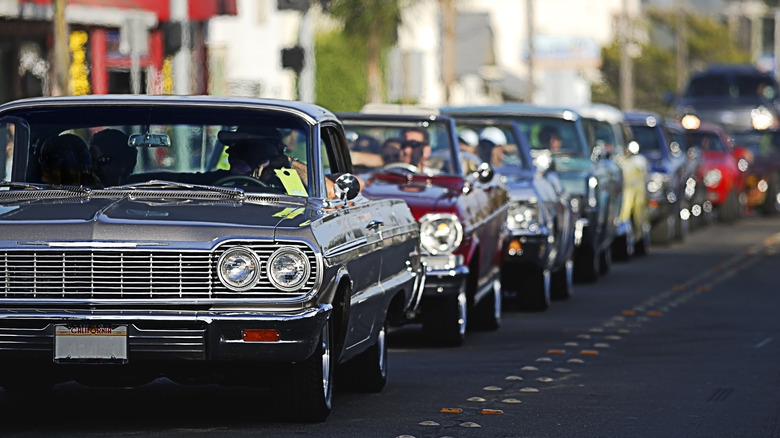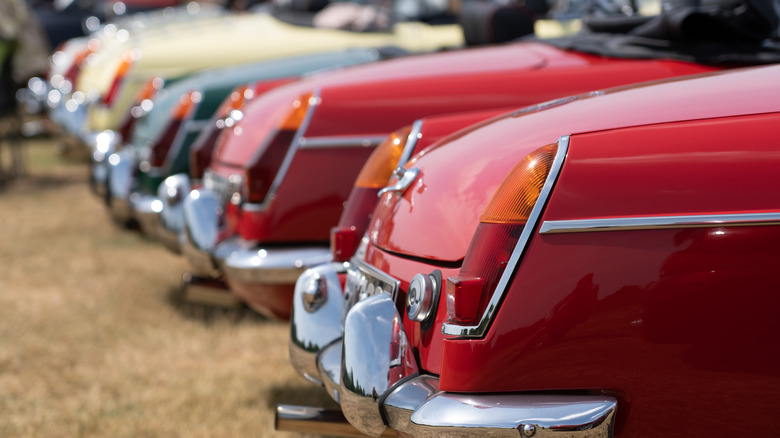When Is A Car Considered A Classic? Here's How Old It Has To Be
It's hard to define what a classic car is, and we generally just know one when we see one driving down the road, or sitting with its hood open at a car show. They tend to draw head turns and look a little cooler than what we're driving. Classic is a subjective term, and while it generally has to be of a certain age, it doesn't refer to any old beater car sitting in a garage leaking oil. You'll hear a different definition of what constitutes a classic from whomever you talk to, especially if they're trying to convince you their vehicle is one. But some guidelines are mostly agreed upon (mostly).
What helps is understanding the three main categories: there are classic, vintage, and antique cars. All three are generally old, yet come with their own distinctions. As Fast Lane Cars notes, a classic car is generally over between 25 and 40 years old, vintage cars refer to those produced between 1919 and 1930, and while it varies, antique cars tend to be from the same time period and beforehand, with an added historical element to the car, especially if it comes from the early brass era.
These aren't overly strict designations, and often the term classic can encompass all three categories, which is why you'll sometimes see classic cars at vintage car shows, and vintage and antique cars at classic ones. Those cars are generally welcome, for the most part.
How insurance agencies, states, and car clubs define things
While these are very general guidelines, some organizations have stricter definitions. If you're looking to join the Classic Car Club of America, for instance, your vehicle must be a "fine" and/or "distinctive" automobile built between 1915 and 1948, created in limited quantities, and not mass-produced. Even then, there's no guarantee your application will get accepted.
What confuses all these definitions even more is that each state has its own definitions of what constitutes a classic when it comes to registration. Many require a classic to be at least 25 years old, though in New York it's 30, and in California, they don't distinguish between classic, vintage, and antique cars. Instead, it will be deemed "historical" if the car is over 25 years old and manufactured after 1922. You could be driving from one state to another and your car will change definitions when it crosses the state line.
Each insurance company has their own requirements as well: usually the vehicle must be over 25 to 30 years old. The rates can sometimes be lower than you think, as long as the car is driven in a manner befitting a classic, not for daily transportation, and mostly driven to car shows, classic events, and in parades. There tend not to be many accidents during parades.
If there's one area where states, car clubs, insurance companies, and most others seem to find common ground on classic car rules, it's that they must be in their original condition, and only restored in a manner consistent with the original design, specifications, and materials. That means that if you're driving a 1930 Studebaker President, and for some reason installed fins and speakers, it might still be a cool vehicle, but not necessarily an official classic.

